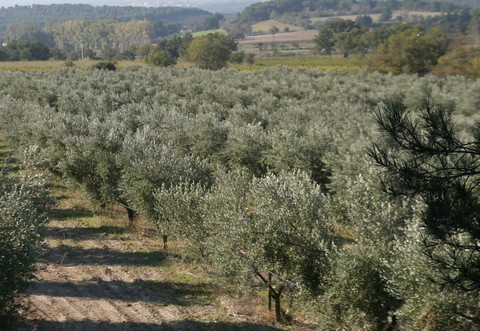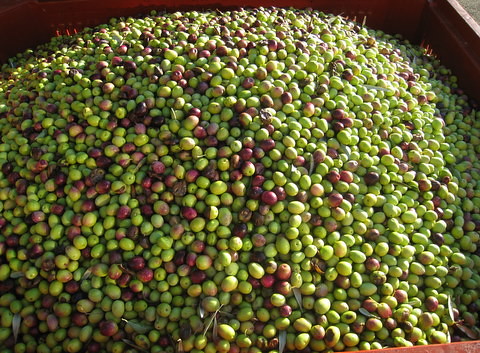The Royal Olive Tree
Olive trees are essential to Provence. The olives themselves are important, of course, but also their oil, which is the base of the cuisine of the region. And the wood from the trees is turned into the spoons that stir the sauce, the boards on which the garlic – and everything else – is chopped, and bowls that hold the food in the kitchens and on the tables of Provence. The whole meal flows from the olive tree…No wonder it has been called “The king of Provence”.
In the unusually cold winter of 1956, a major frost led of the destruction of hundreds of thousands of olive trees. The sap froze and the trees exploded; their hearts burst open. And yet there are still more than a hundred different kinds of olive trees cultivated in Provence. The groves are everywhere, terraced in stone, visible from most roads and towns and adorning many gardens. The leaves of the olive tree are attached in a way that allows them to twist with the slightest breeze, turning from dark green to a silvery hue. The fruit all starts out green but becomes black if allowed to mature and ripen.
Many villages still have their own olive oil mill cooperatives. The villagers, some with full orchards, others with only a few trees, harvest their own olives, often with the willing help of family and friends. They take the full baskets to the mill to be weighed and mixed into the community vats to be crushed to make virgin olive oil. Since an olive tree is productive only every other year, the amount of oil that contributors get back for their own consumption varies from year to year. And consume they do. In Provence, butter is always replaced by olive oil.
Different oils are used for cooking, salads, or dipping bread with their taste depending on the variety of olives used. I am particularly fond of an oil made from four different olives: Salonenque, Berruguette, the Verdale, and the Grossane that comes from the valley of les Baux de Provence. The oil is delicate, fragrant, and to my taste exceptionally fine. It has received an AOC appellation which, as with wines and cheeses, is a guarantee of the origin of the produce.
Oil tastings, like wine tastings, can help you decide which oils you like best. If you would like to have an olive oil tasting session, I recommend Le Moulin St. Michel in Mouriès. You’ll be able to taste different oils from Les Baux and can also visit the original mill which houses equipment used when the mill opened in 1744.
Of course, not all olives are used for olive oil. At restaurants, in homes, and at the outdoor markets of Provence, you will find olives of many different colors, tastes, and preparations. There are amères olives, black and bitter, and the small black olives of Nice. Or, if you like green olives there are cassées, green and broken. There are olives of both colors, whole, pitted, or stuffed.
In Roquebrune Cap Martin, Julien, an olive wood sculptor whom I first saw in the mid 1980’s can still be found in his atelier, Au Coeur de l’Olivier. He now works with two other sculptors who turn the beautifully grained and enduring wood into religious or animal figures. I have a preference for his remarkable salad bowls, cutting boards and ladles with beautiful flowing shapes.
And if you are in the market for gifts for yourself or others, also look for provençal soap made with olive oil.
Image credits:1. Olive groves in Les Baux de Provence
2. Olive wood by Julien
3. Olives ready to be pressed into virgin olive oil










Laurence nice write up on Olives. I too love the oil from Les Baux. Welcome to My French Life.
Thanks for all this great information… I love tapenade (a mixture of olives and anchovies, with onions and garlic), spread on a toast of bread with a glass of wine, it’s just so French !
Oil tastings, added to my list of things to do! Thank you for this great insight Laurence.
By the way, I’m wondering how an oil tasting works. Do you taste oils in a spoon, or maybe you use a piece of bread dipped in the oil?
Julie, actually it depends on which olive mill you visit. Some provide spoons and others tiny pieces of bread that you can dip into the various olive oils. I prefer tastings with bread personnally. Laurence
I have fond memories of my grandparents’ mas provençal in Grasse, they had many olive trees and took to the cooperative to turn them into oil.
I think I’d also like it better with a good loaf of bread… Thank you for your answer 🙂 I really like your pictures too by the way.